While there were many ‘threats’ during the Cold War (big and small \ dangerous and not so much so) simply put there were two primary aspects of the overall ‘threat’; ONE – the technological dangers posed by the potential detonation of many nuclear bombs (blast, thermal pulse, immediate radiation and widespread, downwind fallout radiation) and TWO – an ideologically driven, malevolent, anti-democratic, morally bankrupt, technologically competent, resourceful and determined enemy increasingly in possession of nuclear weapons and the means to deliver them backed up by a powerful, highly indoctrinated militaristic culture.
THE NUCLEAR THREAT, ITS IMPLICATIONS AND PLANNING GUIDANCE, JUNE 1973
The aim of the above paper is to provide civil emergency planners with an understanding of the implications of the threat to Canada of a nuclear weapon attack on the North American Continent to assist them in preparing their programs and contingency plans for such an emergency. This paper updates and replaces the information contained in the Canada Emergency Measures document “The Nuclear Threat to Canada” dated December 30, 1970 and “Implications of the Nuclear Threat and Planning Guidance” dated April 1971. It consists of five parts as follows:
a. Part I — The threat and General Effects
b. Part II — General Implications of the Threat
c. Part Ill — Planning for Various Types of R isk Areas
d. Part IV — Planning Guidance for Civil Emergency Activities
e. Part V — Conclusion
The CASDAM zones for a 1 Megaton AIRBURST bomb on the CFS Leitrim ‘listening post’, Ottawa. It is currently located at the entrance to the Diefenbunker entrance tunnel. (This display board – which was originally from the EPC Situation Centre at EPC HQ on Slater Street – was given to the Museum circa 2003). It illustrates the horrific extent of such a bomb, even when detonated over a relatively rural target.
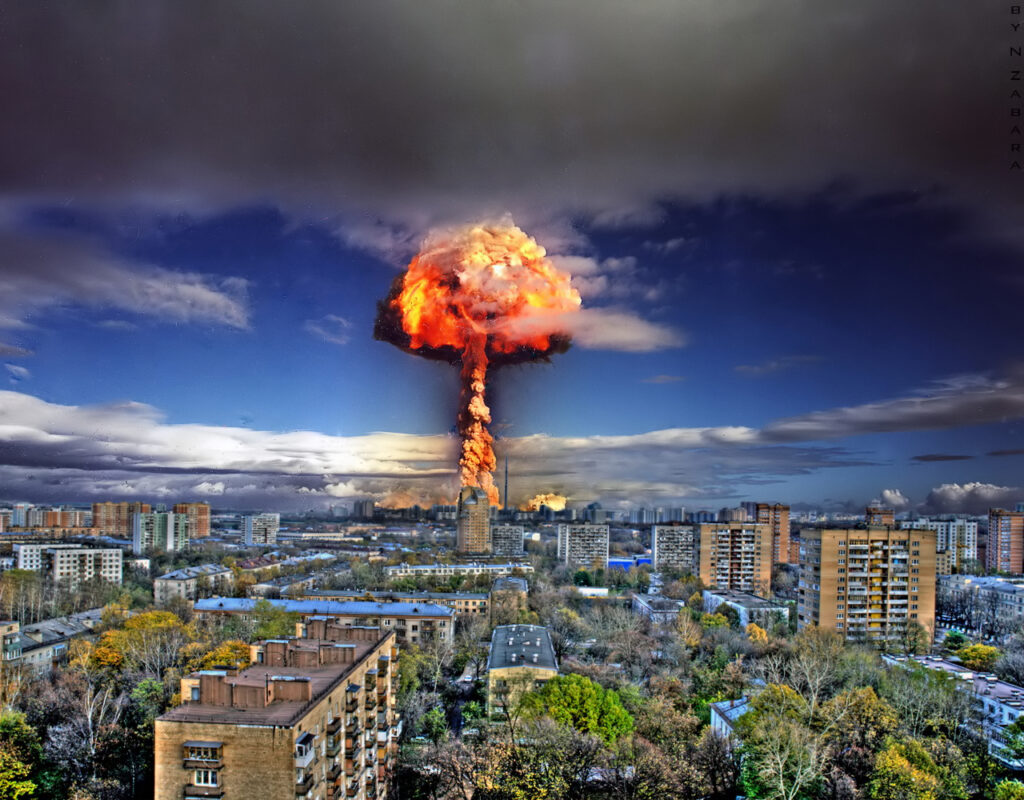

Prelinger Archives link to film “Radiological Defense”
USA Civil Defense film (1961) on nuclear fallout and its potential for damage in the event of an attack on the United States. Freakishly dramatic music. Picture of people going about their daily activity is occasionally colored red to illustrate contamination of radioactive fallout. Stock Shots: teletypes in a row; suburbia, houses and lawns; atomic bomb explosions; animation of fallout, explosions, maps of U.S.A.; highways; traffic; crowd scenes; newspaper headlines; debris; corn fields; death. Bizarre shot: cows entering fallout shelter built expressly for them. classroom instruction in radiation sickness; excellent hospital shot; excellent actual footage of nuclear explosion; excellent animation; livestock at pasture; driving through the desert; mountains; anemometer; serious faces of men at conference table family in shelter; fallout shelter models; fireman and park ranger uses Geiger counters; evacuation onto school buses; shelter signs;



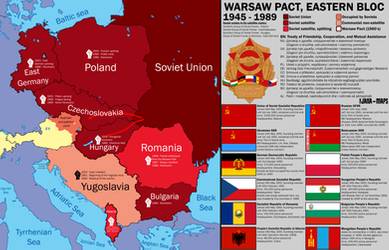

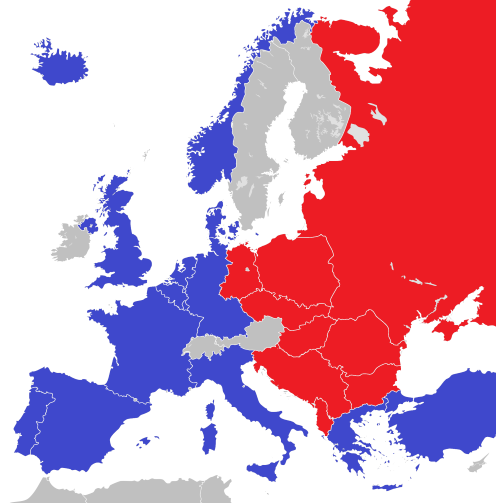
Communism A propaganda (or was it?) film by Coronet Films. Click on the link to decide for yourself. Coronet was a leading producer and distributor of many American “educational” documentary shorts shown in public schools, mostly in the 16mm format, from the 1940s through the 1980s.
One viewer comments: “Awesomely amusing and dramatic exaggeration of what didn’t even need to be exaggerated. A treasure trove of sampling exploration and stock footage video clay to model you something more psychedelic and enjoyable around the volcano. A laughable look at overly alarmist propaganda based on a concept that was threatening enough without the noir-grindhouse mental sexploitation.
Funny how when every communist government fails it was not true to the cause… maybe there’s an inherent flaw in the cause that opposes truth? Great video, campy production and over the top s__t your pants antics await inside. ” Do you agree?


Time Lapse A Youtube Time-Lapse Map of Every Nuclear Explosion Since 1945 in 3 minutes!

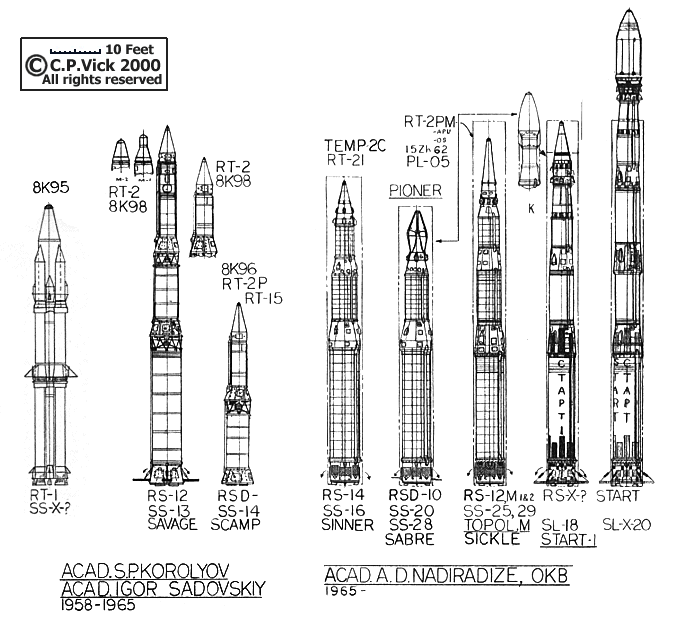
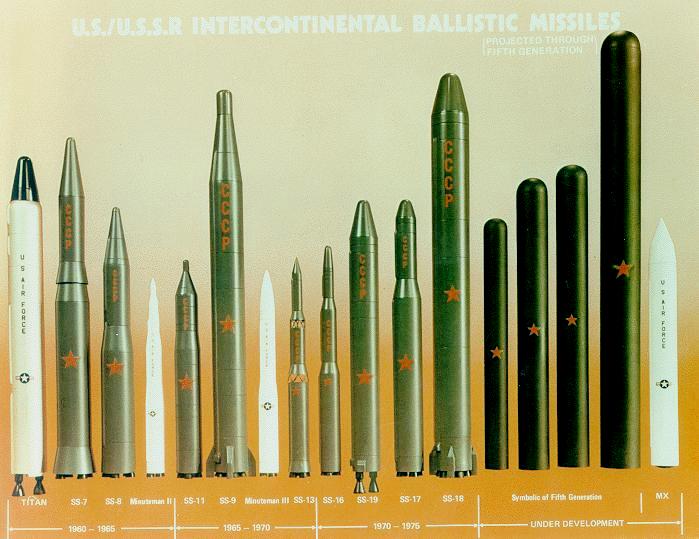
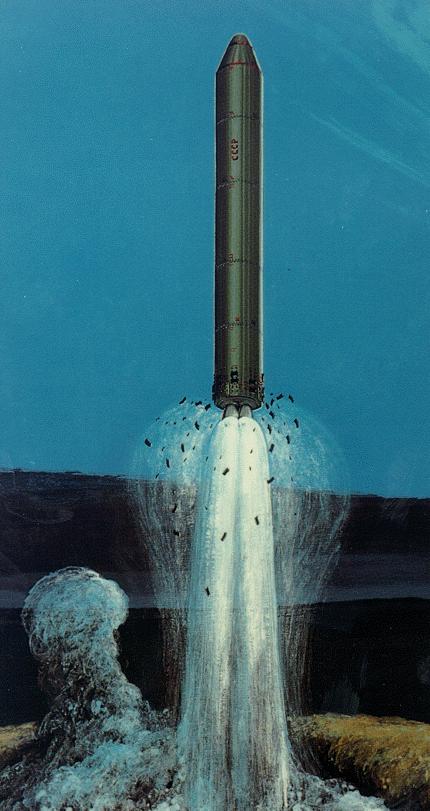
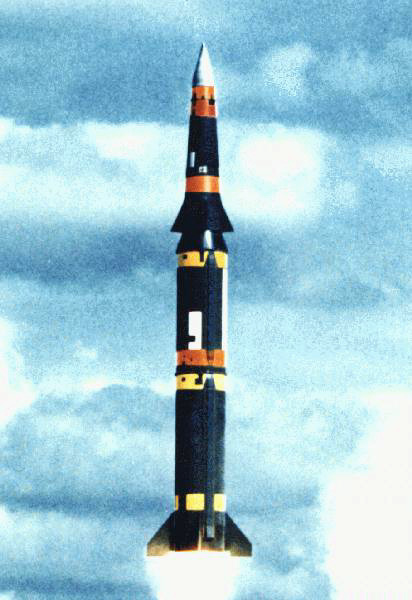

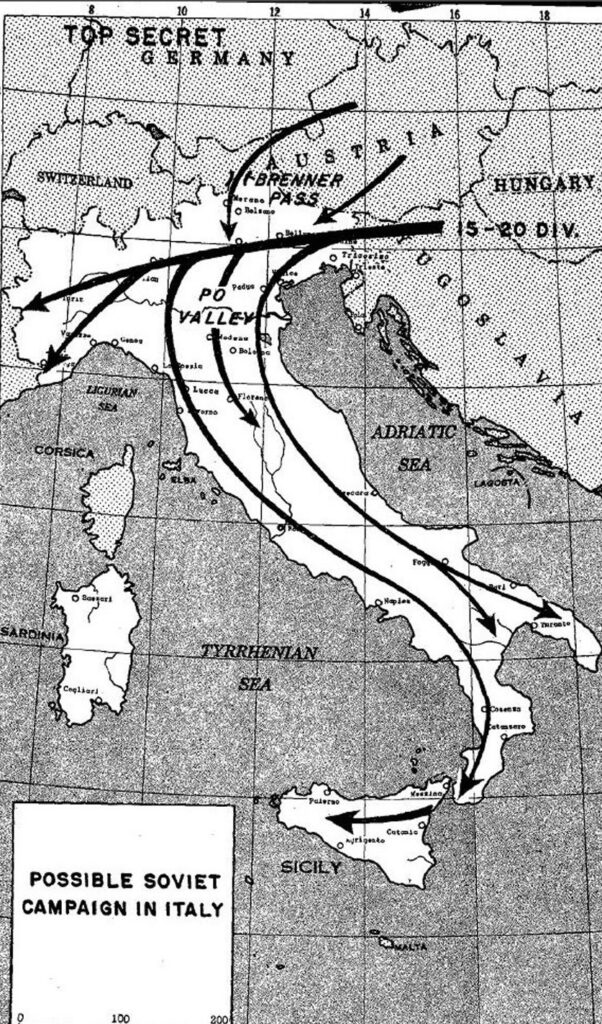


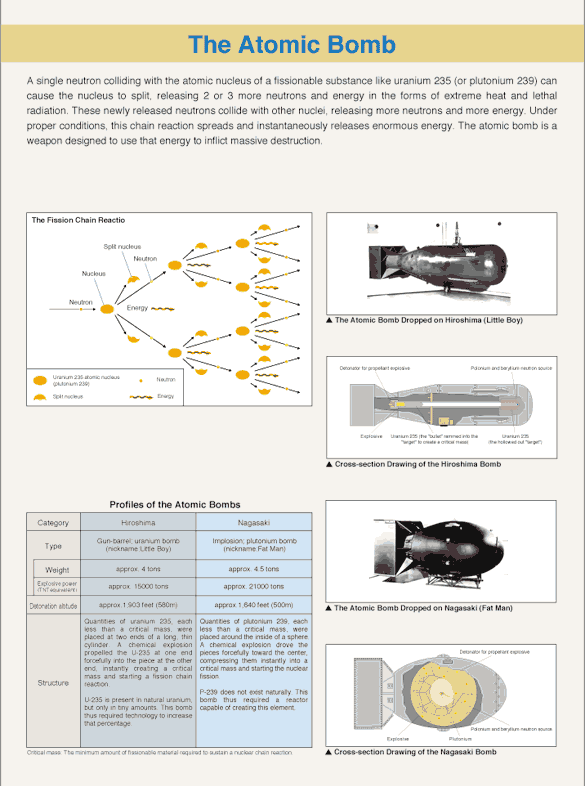
Is it safe to come out yet? Check below……
Radiation Decay Using the Seven-tenths Rule
- The level of radioactivity in the fallout from detonation of a ground burst nuclear weapon “decays” quite rapidly.
- For most purposes the ‘seven-tenths rule’ enables the making of a quick approximate calculation of the radiation level at any given time, from a single measurement at a known time.
- This rule states that the intensity of radiation falls by a factor (multiple) of 10 as the time lengthens by a factor (multiple) of 7. Its application is illustrated in the following table:
| After the nearby explosion of a nuclear bomb assume the level of radiation at particular location is 2000 rads per hour. (At 200 rads/hr most people will be seriously ill with “radiation sickness” and many will eventually die from its effects). | |
| Time-after a Nuclear Detonation | Level of Nuclear Radiation at That Time |
| @1 hour | 2000 rads/hr |
| @7×1 hour = 7 hours | 1/10th of 2000=200 rads/hr |
| @7x7x1 hour = 49 hours, that is about 2 days later |
1/100th of 2000=20 rads/hr |
| @7x7x7x1 hour = 343 hours, that about 2 weeks later |
1/1000th of 2000=2 rads/hr |
| @7x7x7x7x1 hour = 2401 hrs, that is about 100 days later | 1/10,000th of 2000=0.2 rph |
To construct your very own hydrogen bomb just use the simple B-28 H-Bomb Construction Plans HERE! You will have to have a means of delivering your bomb to a suitable target. You might consider using a Multiple Independently-targeted Rocket Vehicle such as this MIRV HERE! Up to nine nuclear bombs could have been (can be!) independently targeted by one ICBM over a 300 mile oval by using MIRVs.
Simplified Graphical Summary of the Effects of a Nuclear Bomb Exploding (Click HERE!)

HOW CLOSE WE CAME…..
20
Mishaps That Might Have Started Accidental Nuclear War
by
Alan F. Philips, M.D.
Ever since the two adversaries in the Cold War, the U.S.A. an the U.S.S.R., realized that their nuclear arsenals were sufficient to do disastrous damage to both countries at short notice, the leaders and the military commanders have thought about the possibility of a nuclear war starting without their intention or as a result of a false alarm. Increasingly elaborate accessories have been incorporated in nuclear weapons and their delivery systems to minimize the risk of unauthorized or accidental launch or detonation. A most innovative action was the establishment of the “hot line” between Washington and Moscow in 1963 to reduce the risk of misunderstanding between the supreme commanders.
Despite
all precautions, the possibility of an inadvertent war due to an
unpredicted sequence of events remained as a deadly threat to both
countries and to the world. That is the reason I am prepared to spend
the rest of my life working for abolition of nuclear weapons.
One way a war could start is a false alarm via one of the warning systems, followed by an increased level of nuclear forces readiness while the validity of the information was being checked. This action would be detected by the other side, and they would take appropriate action; detection of the response would tend to confirm the original false alarm; and so on to disaster. A similar sequence could result from an accidental nuclear explosion anywhere. The risk of such a sequence developing would be increased if it happened during a period of increased international tension.
On the American side many “false alarms” and significant accidents have been listed , ranging from trivial to very serious, during the Cold War . Probably many remain unknown to the public and the research community because of individuals’ desire to avoid blame and maintain the good reputation of their unit or command. No doubt there have been as many mishaps on the Soviet Side.
Working with any new system, false alarms are more likely. The rising moon was misinterpreted as a missile attack during the early days of long-range radar. A fire at a broken gas pipeline was believed to be enemy jamming by laser of a satellite’s infrared sensor when those sensors were first deployed.
The risks are illustrated by the following selection of mishap. If the people involved had exercised less caution, or if some unfortunate coincidental event had occurred, escalation to nuclear war can easily be imagined. Details of some of the events differ in different sources: where there have been disagreements, I have chosen to quote those from the carefully researched book, The Limits of Safety by Scott D. Sagan. Sagan gives references to original sources in all instances.
The following selections represent only a fraction of the false alarms that have been reported on the American side. Many probably remain unreported, or are hidden in records that remain classified. There are likely to have been as many on the Soviet Side which are even more difficult to access.
However to set the scene for the more specific instances that follow here is a sample YouTube video: This War Game Glitch Almost Ended the World . The 1983 “WarGames” may have been based on this event.
1) November 5, 1956: Suez Crisis Coincidence
British and French Forces were attacking Egypt at the Suez Canal;. The Soviet Government had suggested to the U.S. that they combine forces to stop this by a joint military action, and had warned the British and French governments that (non-nuclear) rocket attacks on London and Paris were being considered. That night NORAD HQ received messages that:
(i) unidentified aircraft were flying over Turkey and the Turkish air force was on alert
(ii) 100 Soviet MIG-15’s were flying over Syria
(iii) a British Canberra bomber had been shot down over Syria
(iv) the Soviet fleet was moving through the Dardanelles.
It is reported that in the U.S.A. General Goodpaster himself was concerned that these events might trigger the NATO operations plan for nuclear strikes against the U.S.S.R.
The four reports were all shown afterwards to have innocent explanations. They were due, respectively, to:
(i) a flight of swans
(ii) a routine air force escort (much smaller than the number reported) for the president of Syria, who was returning from a visit to Moscow
(iii)
the Canberra bomber was forced down by mechanical problems
(iv) the Soviet fleet was engaged in scheduled routine exercises.
2) November 24, 1961: BMEWS Communication Failure
On the night of November 24, 1961, all communication links went dead between SAC HQ and NORAD. The communication loss cut off SAC HQ from the three Ballistic Missile Early Warning Sites (BMEWS) at Thule (Greenland,) Clear (Alaska,) and Fillingdales (England,). There were two possible explanations facing SAC HQ: either enemy action, or the coincidental failure of all the communication systems, which had redundant and ostensibly independent routes, including commercial telephone circuits. All SAC bases in the United States were therefore alerted, and B-52 bomber crews started their engines, with instructions not to to take off without further orders. Radio communication was established with an orbiting B-52 on airborne alert, near Thule. It contacted the BMEWS stations by radio and could report that no attack had taken place.
The reason for the “coincidental” failure was the redundant routes for telephone and telegraph between NORAD and SAC HQ all ran through one relay station in Colorado. At that relay station a motor had overheated and caused interruption of all the lines.
3) August 23, 1962: B-52 Navigation Error
SAC Chrome Dome airborne alert route included a leg from the northern tip of Ellesmore Island, SW across the Arctic Ocean to Barter Island, Alaska. On August 23, 1962, a B-52 nuclear armed bomber crew made a navigational error and flew 20 degrees too far north. They approached within 300 miles of Soviet airspace near Wrangel island, where there was believed to be an interceptor base with aircraft having an operational radius of 400 miles.
Because of the risk of repetition of such an error, in this northern area where other checks on Navigation are difficult to obtain, it was decided to fly a less provocative route in the future. However, the necessary orders had not been given by the time of the Cuban missile crisis in October 1962, so throughout that crisis the same northern route was being flown 24 hours a day.
4) August-October, 1962: U2 Flights into Soviet Airspace
U2 high altitude reconnaissance flights from Alaska occasionally strayed unintentionally into Soviet airspace. One such episode occurred in August 1962. During the Cuban missile crisis on October of 1962, the U2 pilots were ordered not to fly within 100 miles of Soviet airspace.
On the night of October 26, for a reason irrelevant to the crisis, a U2 pilot was ordered to fly a new route, over the north pole, where positional checks on navigation were by sextant only. That night the aurora prevented good sextant readings and the plane strayed over the Chukotski Peninsula. Soviet MIG interceptors took off with orders to shoot down the U2. The pilot contacted his U.S. command post and was ordered to fly due east towards Alaska. He ran out of fuel while still over Siberia. In response to his S.O.S., U.S. F102-A fighters were launched to escort him on his glide to Alaska, with orders to prevent the MIG’s from entering U.S. airspace. The U.S. interceptor aircraft were armed with nuclear missiles. These could have been used by any one of the F102-A pilots at his own discretion.
5) October 24, 1962- Cuban Missile Crisis: A Soviet Satellite Explodes
On October 24, a Soviet satellite entered its own parking orbit, and shortly afterward exploded. Sir Bernard Lovell, director of the Jodrell Bank observatory wrote in 1968: “the explosion of a Russian spacecraft in orbit during the Cuban missile crisis… led the U.S. to believe that the USSR was launching a massive ICBM attack.” The NORAD Command Post logs of the dates in question remain classified, possibly to conceal reaction to the event. Its occurrence is recorded, and U.S. space tracking stations were informed on October 31 of debris resulting from the breakup of “62 BETA IOTA.”

6) October 25, 1962- Cuban Missile Crisis: Intruder in Duluth
At around midnight on October 25, a guard at the Duluth Sector Direction Center saw a figure climbing the security fence. He shot at it, and activated the “sabotage alarm.” This automatically set off sabotage alarms at all bases in the area. At Volk Field, Wisconsin, the alarm was wrongly wired, and the Klaxon sounded which ordered nuclear armed F-106A interceptors to take off. The pilots knew there would be no practice alert drills while DEFCON 3 was in force, and they believed World War III had started.
Immediate communication with Duluth showed there was an error. By this time aircraft were starting down the runway. A car raced from command center and successfully signaled the aircraft to stop. The original intruder was a bear.
7) October 26, 1962- Cuban Missile Crisis: ICBM Test Launch
At Vandenburg Air Force Base, California, there was a program of routine ICBM test flights. When DEFCON 3 was ordered all the ICBM’s were fitted with nuclear warheads except one Titan missile that was scheduled for a test launch later that week. That one was launched for its test, without further orders from Washington, at 4a.m. on the 26th.
It must be assumed that Russian observers were monitoring U.S. missile activities as closely as U.S. observers were monitoring Russian and Cuban activities. They would have known of the general changeover to nuclear warheads, but not that this was only a test launch.
8) October 26, 1962- Cuban Missile Crisis: Unannounced Titan Missile Launch
During the Cuba crisis, some radar warning stations that were under construction and near completion were brought into full operation as fast as possible. The planned overlap of coverage was thus not always available.
A normal test launch of a Titan-II ICBM took place in the afternoon of October 26, from Florida to the South Pacific. It caused temporary concern at Moorestown Radar site until its course could be plotted and showed no predicted impact within the United States. It was not until after this event that the potential for a serious false alarm was realized, and orders were given that radar warning sites must be notified in advance of test launches, and the countdown be relayed to them.
9) October 26, 1962- Cuban Missile Crisis: Malstrom Air Force Base
When DEFCON 2 was declared on October 24, solid fuel Minuteman-1 missiles at Malmstrom Air Force Base were being prepared for full deployment. The work was accelerated to ready the missiles for operation, without waiting for the normal handover procedures and safety checks. When one silo and missile were ready on October 26 no armed guards were available to cover transport from the normal separate storage, so the launch enabling equipment and codes were all placed in the silo. It was thus physically possible for a single operator to launch a fully armed missile at a SIOP target.
During the remaining period of the Crisis the several missiles at Malstrom were repeatedly put on and off alert as errors and defects were found and corrected. Fortunately no combination of errors caused or threatened an unauthorized launch, but in the extreme tension of the period the danger can be well imagined.
10) October, 1962- Cuban Missile Crisis: NATO Readiness
It is recorded on October 22, that British Prime Minister Harold Macmillan and NATO Supreme Commander, General Lauris Norstad agreed not to put NATO on alert in order to avoid provocation of the U.S.S.R. When the U.S. Joint Chiefs of Staff ordered DEFCON 3 Norstad was authorized to use his discretion in complying. Norstad did not order a NATO alert. However, several NATO subordinate commanders did order alerts to DEFCON 3 or equivalent levels of readiness at bases in West Germany, Italy, Turkey, and United Kingdom. This seems largely due to the action of General Truman Landon, CINC U.S. Air Forces Europe, who had already started alert procedures on October 17 in anticipation of a serious crisis over Cuba.
11) October, 1962- Cuban Missile Crisis: British Alerts
When the U.S. SAC went to DEFCON 2, on October 24, Bomber Command (the U.K.) was carrying out an unrelated readiness exercise. On October 26, Air Marshall Cross, CINC of Bomber Command, decided to prolong the exercise because of the Cuba crisis, and later increased the alert status of British nuclear forces, so that they could launch in 15 minutes.
It seems likely that Soviet intelligence would perceive these moves as part of a coordinated plan in preparation for immediate war. They could not be expected to know that neither the British Minister of Defense nor Prime Minister Macmillian had authorized them.
It is disturbing to note how little was learned from these errors in Europe. McGeorge Bundy wrote in Danger and Survival (New York: Random House 1988), “the risk [of nuclear war] was small, given the prudence and unchallenged final control of the two leaders.”
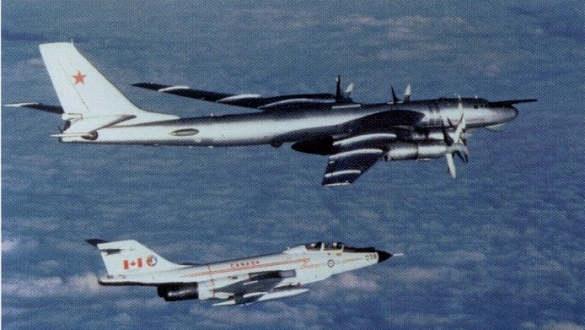
12) October 28, 1962- Cuban Missile Crisis: Moorestown False Alarm
Just before 9 a.m., on October 28, the Moorestown, New Jersey, radar operators informed the national command post that a nuclear attack was under way. A test tape simulating a missile launch from Cuba was being run, and simultaneously a satellite came over the horizon.
Operators became confused and reported by voice line to NORAD HQ that impact was expected 18 miles west of Tampa at 9:02 a.m. The whole of NORAD was reported, but before irrevocable action had taken place it was reported that no detonation had taken place at the predicted time, and Moorestown operators reported the reason for the false alarm.
During the incident overlapping radar’s that should have confirmed or disagreed were not in operation . The radar post had not received routine information of satellite passage because the facility carrying out that task had been given other work for the duration of the crisis.
13) October 28, 1962- Cuban Missile Crisis: False Warning Due to Satellite
At 5:26 p.m. on October 28, the Laredo radar warning site had just become operational. Operators misidentified a satellite in orbit as two possible missiles over Georgia and reported by voice line to NORAD HQ. NORAD was unable to identify that the warning came from the new station at Laredo and believed it to be from Moorestown, and therefore more reliable. Moorestown failed to intervene and contradict the false warning. By the time the CINC, NORAD had been informed, no impact had been reported and the warning was “given low credence.”
14) November 2, 1962: The Penkovsky False Warning
In the fall of 1962, Colonel Oleg Penkovsky was working with the Soviets as a double agent for the (U.S.) C.I.A. He had been given a code by which to warn the CIA if he was convinced that a Soviet attack on the United States was imminent. He was to call twice, one minute apart, and only blow into the receiver. Further information was then to be left at a “dead drop” in Moscow.
The pre-arranged code message was received by the CIA on November 2, 1962.
It was known at the CIA that Penkovsky had been arrested on October 22. Penkovsky knew he was going to be executed. It is not known whether he had told the KGB the meaning of the code signal or only how it would be given, nor is it known exactly why or with what authorization the KGB staff used it. When another CIA agent checked the dead drop he was arrested.
15) November, 1965: Power Failure and Faulty Bomb Alarms
Special bomb alarms were installed near military facilities and near cities in the U.S.A., so that the locations of nuclear bursts would be transmitted before the expected communication failure. The alarm circuits were set up to display a red signal at command posts the instant that the flash of a nuclear detonation reached the sensor and before the blast put it out of action. Normally the display would show a green signal, and yellow if the sensor was not operating or was out of communication for any other reason.
During the commercial power failure in the NE United States, in November 1965, displays from all the bomb alarms for the area should have shown yellow. In fact, two of them from different cities showed red because of circuit errors. The effect was consistent with the power failure being due to nuclear weapons explosions, and the Command Center of the Office of Emergency Planning went on full alert. Apparently the military did not.
16) January 21, 1968: B-52 Crash near Thule
Communication between NORAD HQ and the BMEWS station at Thule had 3 elements:
1. Direct radio communication.
2. A “bomb alarm” as described above.
3. Radio Communication relayed by a b-52 bomber on airborne alert.
On January 21, 1968, a fire broke out in the b-52 bomber on airborne alert near Thule. The pilot prepared for an emergency landing at the base. However the situation deteriorated rapidly, and the crew had to bale out. There had been no time to communicate with SAC HQ, and the pilotless plane flew over the Thule base before crashing on the ice 7 miles miles offshore. Its fuel and high explosive component of its nuclear weapons exploded, but there was no nuclear detonation.
At that time, the “one point safe” condition of the nuclear weapons could not be guaranteed, and it is believed that a nuclear explosion could have resulted form accidental detonation of the high explosive trigger. Had there been a nuclear detonation even at 7 miles distant, and certainty much nearer the base, all three communication methods would have given an indication consistent with a succsessful nuclear attack on both the base and the B-52 bomber. The bomb alarm would have shown red, and the other two communication paths would have gone dead. It would hardly have been anticipated that the combination could have been caused by accident, particularly as the map of the routes for B-52 airborne flights approved by the President showed no flight near to Thule. The route had been apparently changed without informing the White House.
17) October 24-25, 1973: False Alarm During Middle East Crisis
On October 24, 1973, when the U.N. sponsored cease fire intended to end the Arab-Israeli war was in force, further fighting stared between Egyptian and Israeli troops in the Sinai desert. U.S. intelligence reports and other sources suggested that the U.S.S.R. was planning to intervene to protect the Egyptians. President Nixon was in the throes of Watergate episode and not available for a conference, so Kissinger and other U.S. officials ordered DEFCON 3. The consequent movements of aircraft and troops were of course observed by Soviet intelligence. The purpose of the alert was not to prepare for war, but to warn the U.S.S.R. not to intervene in the Sinai. However, if the following accident had not been promptly corrected then the Soviet command might have had a more dangerous interpretation.
On October 25, while DEFCON 3 was in force, mechanics were repairing one of the Klaxons at Kinchole Air Force Base, Michigan, and accidentally activated the whole base alarm system. B-52 crews rushed to their aircraft and started the engines. The duty officer recognized the alarm was false and recalled the crews before any took off.
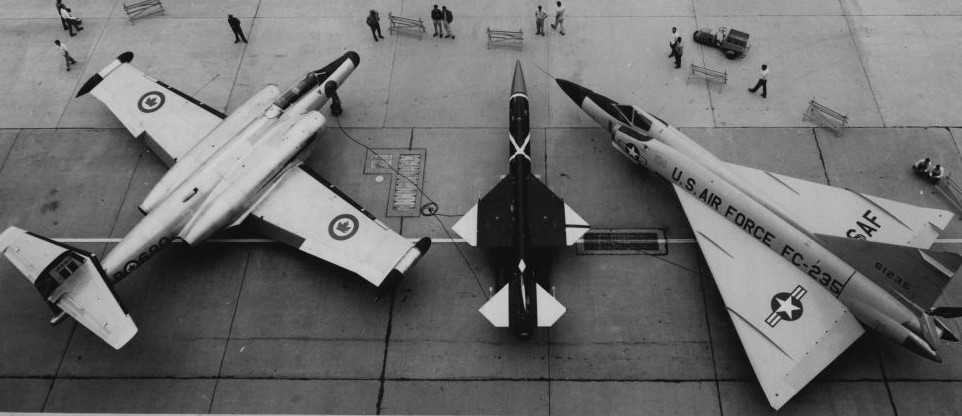
18) November 9, 1979: Computer Exercise Tape
At 8:50 a.m. on November 9, 1979, duty officers at 4 command centers (NORAD HQ, SAC Command Post, The Pentagon National Military Command Center, and the Alternate National Military Command Center) all saw on their displays a pattern showing a large number of Soviet Missiles in a full scale attack on the U.S.A. During the next 6 minutes emergency preparations for retaliation were made. A number of Air Force planes were launched, including the President’s National Emergency Airborne Command Post, though without the President! The President had not been informed, perhaps because he could not be found.
No attempt was made to use the hot line either to ascertain the Soviet intentions or to tell the Soviets the reasons for U.S. actions. This seems to me to have been culpable negligence. The whole purpose of the “Hot Line” was to prevent exactly the type of disaster that was threatening at that moment.
With commendable speed, NORAD was able to contact PAVE PAWS early warning radar and learn that no missiles had been reported. Also, the sensors on the satellites were functioning that day and had detected no missiles. In only 6 minutes the threat assessment conference was terminated.
The reason for the false alarm was an exercise tape running on the computer system. U.S. Senator Charles Percy happened to be in NORAD HQ at the time and is reported to have said there was absolute panic. A question was asked in Congress. The General Accounting Office conducted an investigation, and an off-site testing facility was constructed so that test tapes did not in the future have to be run on a system that could be in military operation.
19) June , 1980: Faulty Computer Chip
The Warning displays at the Command Centers mentioned in the last episode included windows that normally showed
0000 ICBMs detected 0000 SLBMs detected
At 2:25 a.m. on June 3, 1980, these displays started showing various numbers of missiles detected, represented by 2’s in place of one or more 0’s. Preparations for retaliation were instituted, including nuclear bomber crews staring their engines, launch of Pacific Command’s Airborne Command Post, and readying of Minutemen missiles for launch. It was not difficult to assess that this was a false alarm because the numbers displayed were not rational.
While the cause of that false alarm was still being investigated 3 days later, the same thing happened and again preparations were made for retaliation. The cause was a single faulty chip that was failing in a random fashion. The basic design of the system was faulty, allowing this single failure to cause a deceptive display at several command posts.
The following incident is added to illustrate that even now, when the Cold War has been over for 8 years errors can still cause concern. This particular one could have hardly brought nuclear retaliation.; but there are still 30,000 nuclear weapons deployed, and two nuclear weapon states could get into a hostile adversarial status again.
20) January, 1995: Russian False Alarm
On January 25, 1995, the Russian early warning radar’s detected an unexpected missile launch near Spitzbergen. The estimated flight time to Moscow was 5 minutes. The Russian President, the Defense Minister and the Chief of Staff were informed. The early warning and the control and command center switched to combat mode. Within 5 minutes, the radar’s determined that the missile’s impact would be outside the Russian borders.
The missile was Norwegian, and was launched for scientific measurements. ON January 16, Norway had notified 35 countries including Russia that the launch was planned. Information had apparently reached the Russian Defense Ministry, but failed to reach the on-duty personnel of the early warning system.
Comment and a Note On Probability
The probability of actual progression to nuclear war on any one of the occasions listed may have been small, due to planned “fail-safe” features had failed. However, the accumulation of small probabilities of disaster from a long sequence of risks add up to serious danger.
There is no way of telling what the actual level of risk was in these mishaps but if the chance of disaster in every one of the 20 incidents had been only 1 in 100, it is mathematical fact that the chance of surviving all 20 would have been 82%, i.e. about the same as the chance of surviving a single pull of the trigger at Russian roulette played with a 6 shooter. With a similar series of mishaps on the Soviet side: another pull of the trigger. If the risk in some of the events had been as high as 1 in 10, then the chance of surviving just seven such events would have been less than 50:50. Just sayin’….
Acronyms
BMEWS: Ballistic Missile Early Warning Site
CIA: Central Intelligence Agency
CINC: Commander in Chief
DEFCON: Defense Readiness Condition (DEFCON 5 is the peacetime state; DEFCON 1 is a maximum war readiness).
HQ: Headquarters
ICBM: Intercontinental Ballistic Missile (land based)
KGB: Soviet Secret Police and Intelligence
NORAD: North American Air Defense Command
PAVE PAWS: Precision Acquisition of Vehicle Entry Phased-Array Warning System
SAC: Strategic Air Command
SIOP: Single Integrated Operational Plan
SLBM: Submarine Launched Ballistic Missile
Principal
Sources
Britten,
Stewart: The
Invisible Event ,
(London: Menard Press, 1983).
Calder, Nigel: Nuclear
Nightmares ,
(London: British Broadcasting Corporation, 1979)
Peace
Research Reviews ,
vol. ix: 4, 5 (1984); vol. x: 3, 4 (1986) (Dundas, ON.: Peace
Research Institute, Dundas).
Sagan, Scott D.: The
Limits of Safety ,
(Princeton, N.J.: Princeton University Press, (1993)
HISTORY OF NUCLEAR WARHEAD STOCKPILES -1945-1995
NOTE: Totals are estimates. Lists include strategic and non-strategic warheads, as well as warheads awaiting dismantling
|
| 1945 | 1955 | 1965 | 1975 | 1985 | 1995 |
| UNITED STATES | 6 | 3,057 | 31,265 | 26,675 | 22,941 | 14,766 |
| SOVIET UNION | 0 | 200 | 6,129 | 19,443 | 39,197 | 27,000 |
| BRITAIN | 0 | 10 | 310 | 350 | 300 | 300 |
| FRANCE | 0 | 0 | 32 | 188 | 360 | 485 |
| CHINA | 0 | 0 | 5 | 185 | 425 | 425 |
| Source: National Resources Defense Council |
